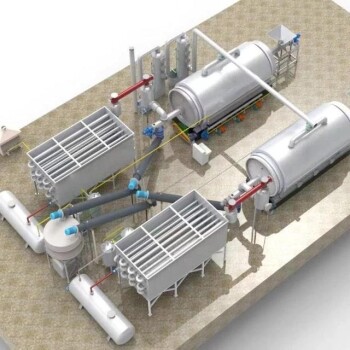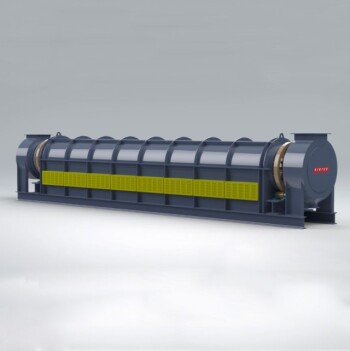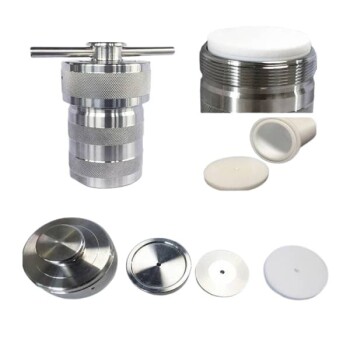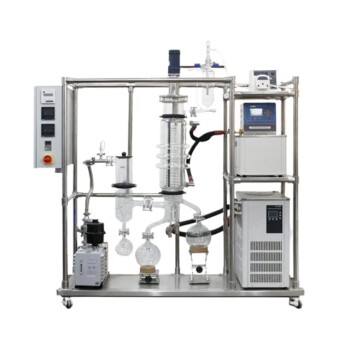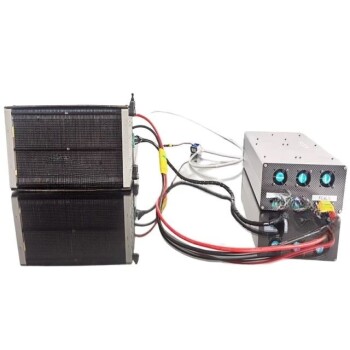Pyrolysis treatment for solid waste management is a thermal decomposition process that converts solid waste materials such as plastics, tires, and biomass into valuable products like syngas, bio-oil, and bio-char by heating them in the absence of oxygen. This process not only reduces the volume of waste sent to landfills but also transforms waste into useful resources such as transportation fuels, soil amendments, activated carbon, and power generation materials. Pyrolysis equipment is designed to ensure safety, efficiency, and environmental friendliness, featuring advanced systems for even heating, gas removal, and automatic feeding. The technology is energy-intensive but offers significant benefits in waste reduction, resource recovery, and environmental sustainability.
Key Points Explained:

1. Definition and Process of Pyrolysis
- Pyrolysis is a thermal decomposition process that occurs in the absence of oxygen.
- It converts solid waste materials (e.g., plastics, tires, biomass) into three main products:
- Syngas: A gaseous mixture that can be used as fuel or further processed into biofuels.
- Bio-oil: A liquid that can be refined for transportation or industrial use.
- Bio-char: A solid residue that can be used as a soil amendment, sorbent, or feedstock for activated carbon production.
2. Applications of Pyrolysis Products
- Syngas: Used for power generation or as a raw material for producing biofuels.
- Bio-oil: Can be refined into transportation fuels or used in industrial applications.
-
Bio-char:
- Improves soil fertility and carbon sequestration when used as a soil amendment.
- Acts as a sorbent for environmental cleanup.
- Serves as a feedstock for producing activated carbon.
3. Advantages of Pyrolysis in Waste Management
- Waste Reduction: Significantly reduces the volume of waste sent to landfills.
- Resource Recovery: Converts waste into valuable products, promoting a circular economy.
- Environmental Benefits: Reduces greenhouse gas emissions and environmental pollution compared to traditional waste disposal methods.
- High Energy Density: Produces fuels with high energy density, making it a viable renewable energy source.
4. Features of Pyrolysis Equipment
-
Safety and Efficiency:
- Operates under normal pressure to prevent gas leaks.
- Features a horizontal upper drive rotating structure for even heating and longer service life.
- Includes a special process to remove corrosive gases, enhancing safety.
-
Automation:
- Equipped with automatic feeding and slag discharging systems, reducing manual intervention.
-
Advanced Systems:
- Utilizes a countercurrent wet dust removal process and a new condensation system to prevent blockages.
-
Compact Design:
- Occupies less space while yielding more oil, making it environmentally friendly and safer.
5. Challenges and Considerations
- Energy-Intensive: The process requires significant energy input, which can be a limitation.
- Specific Conditions: Pyrolysis requires controlled conditions, such as precise temperature and absence of oxygen, to function effectively.
- Initial Investment: High upfront costs for pyrolysis equipment, though the waste management business using this technology can pay for itself quickly and generate high income.
6. Environmental and Economic Impact
- Reduced Landfill Use: Pyrolysis decreases the amount of waste sent to landfills, mitigating environmental hazards.
- Renewable Energy Source: The process aligns with global efforts to transition to renewable energy sources.
- Economic Viability: The ability to convert waste into valuable products makes pyrolysis a profitable and sustainable waste management solution.
7. Future Prospects
- Pyrolysis is gaining importance as a sustainable waste management solution, especially with the growing demand for renewable energy and the need to reduce environmental pollution.
- Its ability to process a wide range of solid wastes, including plastics and biomass, makes it a versatile and scalable technology for the future.
By addressing these key points, pyrolysis emerges as a promising and effective method for managing solid waste, reducing environmental impact, and creating valuable resources.
Summary Table:
| Key Aspect | Details |
|---|---|
| Process | Thermal decomposition in the absence of oxygen. |
| Main Products | Syngas (fuel), bio-oil (transportation/industrial use), bio-char (soil/sorbent). |
| Applications | Power generation, biofuels, soil amendment, environmental cleanup. |
| Advantages | Waste reduction, resource recovery, environmental benefits, high energy density. |
| Equipment Features | Safe, efficient, automated, compact design with advanced systems. |
| Challenges | Energy-intensive, requires controlled conditions, high initial investment. |
| Environmental Impact | Reduces landfill use, renewable energy source, economically viable. |
Interested in pyrolysis for your waste management needs? Contact us today to learn more!
